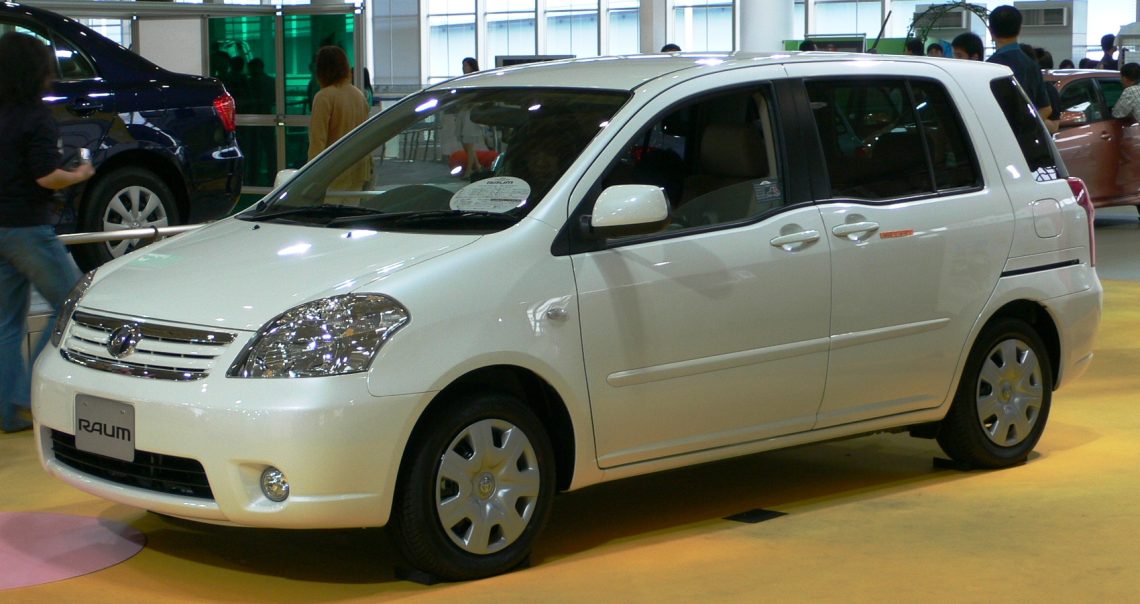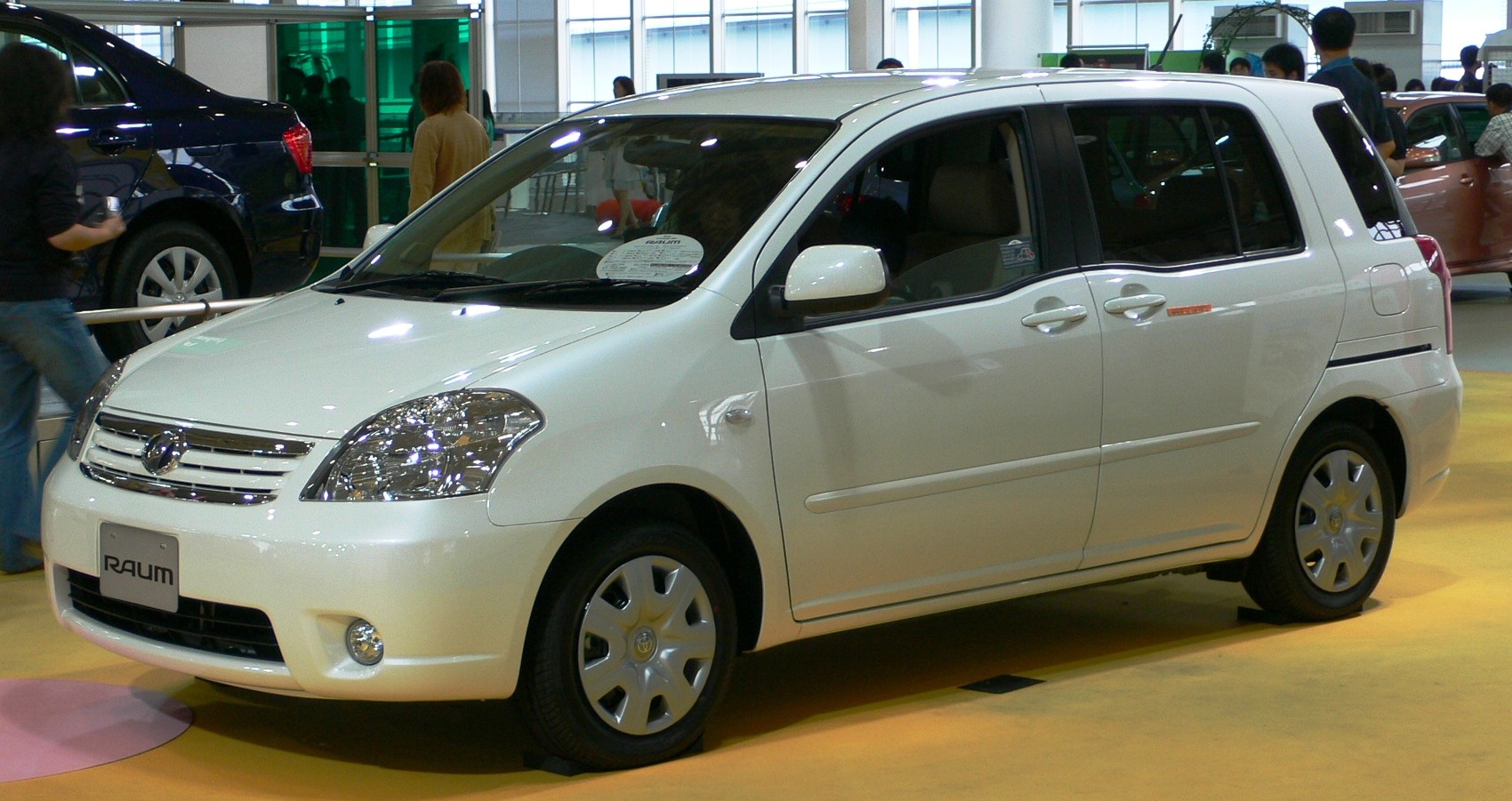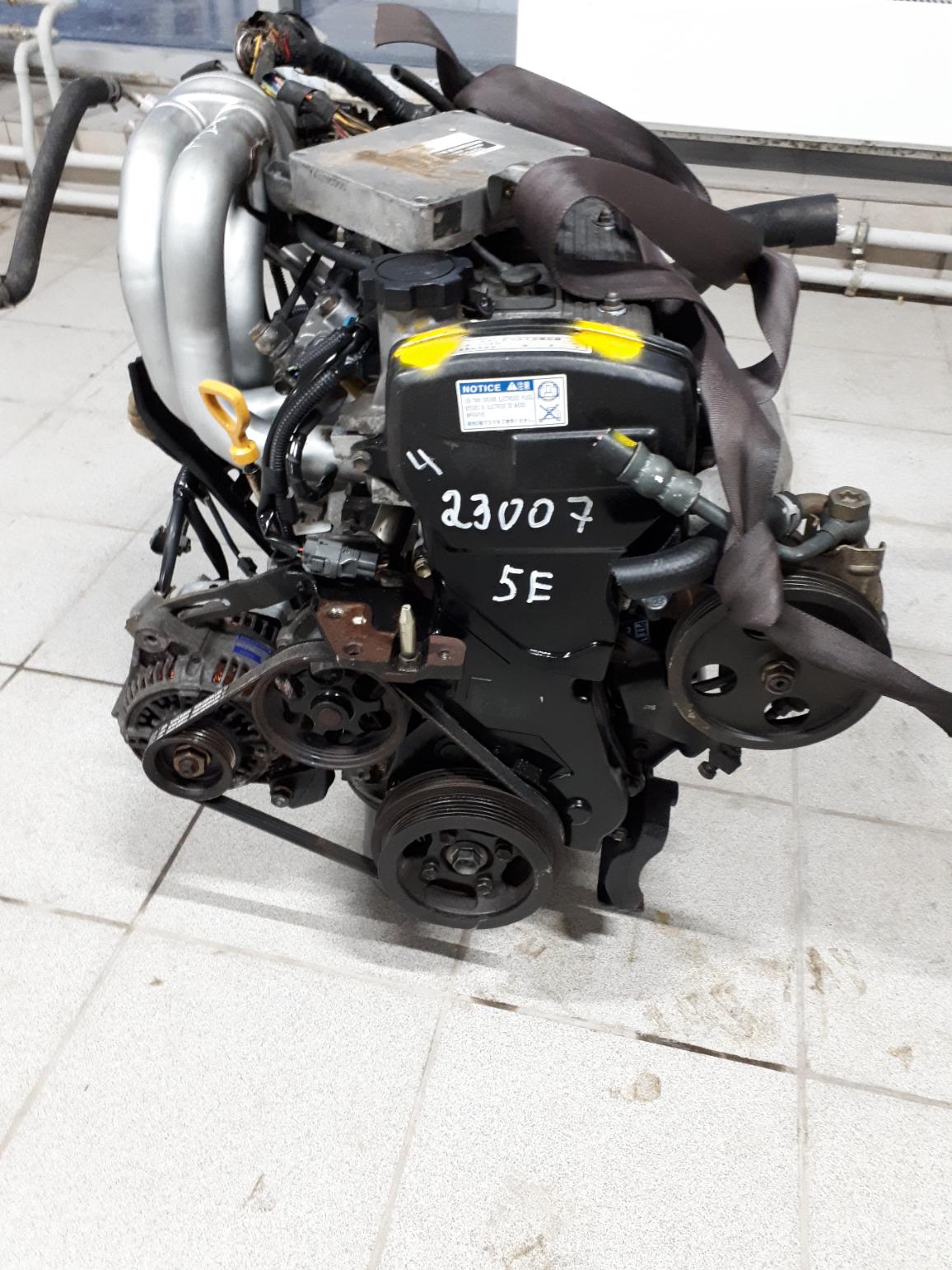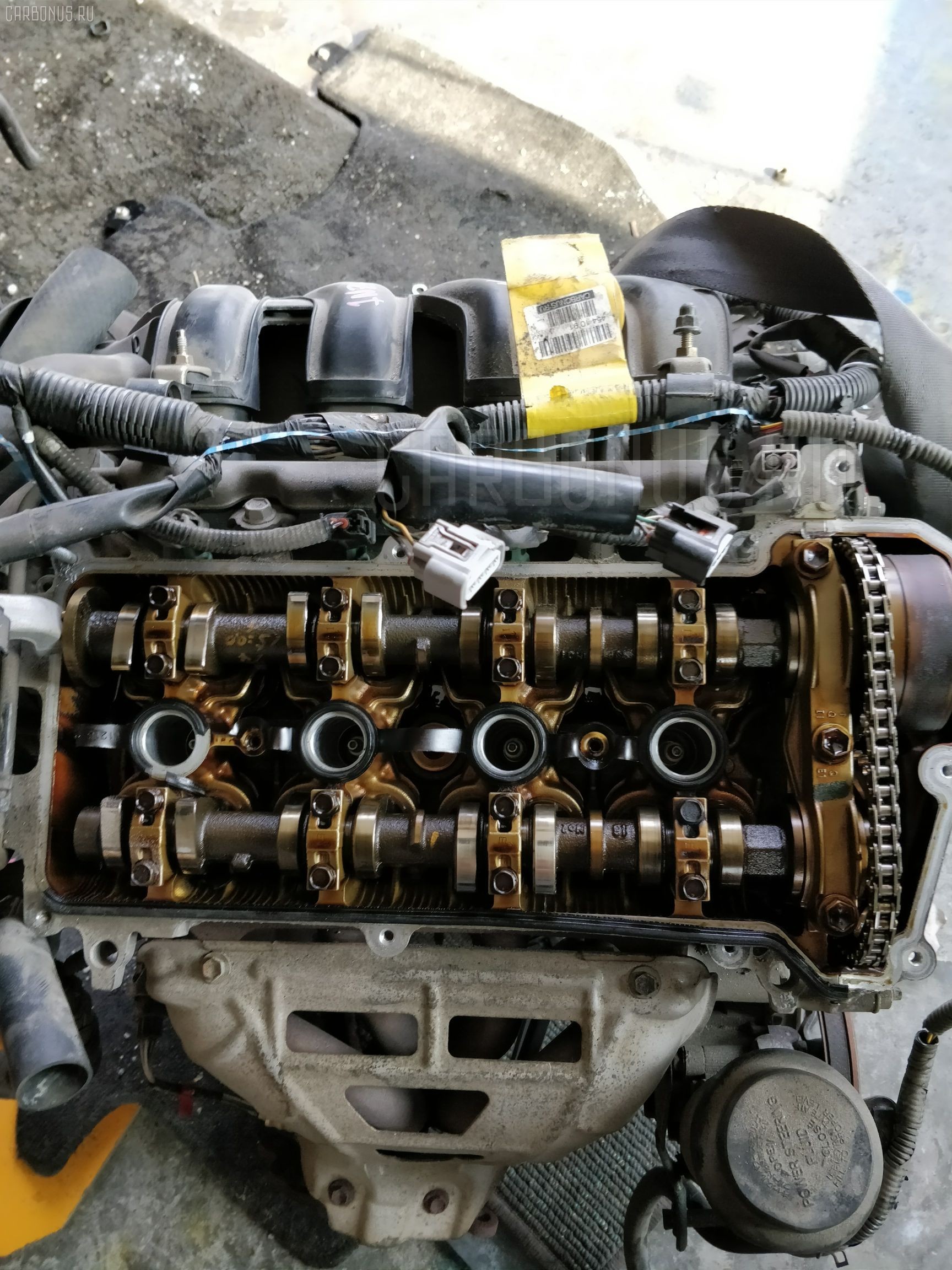
Toyota Raum engines
Content
The Raum model from the well-known manufacturer Toyota is not known to every domestic motorist. Toyota Raum did not receive wide distribution due to the fact that it was not officially supplied to the markets of the Russian Federation. Nevertheless, this model managed to acquire fans among motorists living in Siberia and the Far East.
Economical and quite simple in technical terms, the car quickly won the trust of pragmatic and undemanding drivers. And the availability and low cost of spare parts supplied from Japan to the Russian Federation makes Toyota Raum almost a trouble-free "workhorse".
Exterior and interior
The Toyota Raum is a compact minivan developed by Toyota based on the Toyota Corsa. The development of the model began at the beginning of 93-94, and the car went into mass production in May 1997. The appearance of the newly-made model at that time turned out to be very predictable: smooth and restrained body lines, an unremarkable radiator grille and “square” headlights with rounded edges.

From non-standard solutions - the design of the rear doors: the designers decided to change the design of the rear doors, replacing their opening mechanism with a sliding one. Such a technical study made it possible to board and disembark passengers in cramped spaces.
Other distinctive features on the outside include a front bumper with massive air holes and wide rear pillars between the luggage compartment and the tailgate. The aft glazing looks non-trivial and vaguely resembles a similar solution on the Subaru Outback, with the exception of the location of the headlights. On Toyota Raum, the rear lights are located at the top of the rear pillars, and form, as it were, a single whole of the entire rear glazing, smoothly connecting the side windows and the rear door.
The interior of the Toyota Raum cannot boast of special frills, everything you need for comfortable movement is available and nothing more.
However, one of the most important features in the cabin of this car is its spaciousness. Despite the modest external dimensions, the interior decoration is arranged so competently that it can comfortably accommodate four adults.
Technical equipment Toyota Raum
All generations of Toyota Raum were equipped exclusively with automatic transmission. Depending on the configuration, the cars could be equipped with front-wheel drive or all-wheel drive. Depending on the drive, an automatic transmission with an appropriate design and gear ratios was installed on cars. The automatic transmission is a classic design with a torque converter.

Automatic transmission modifications:
- for front-wheel drive versions - model EXZ10 (index - A244L);
- for all-wheel drive versions - model EXZ15 (index - A244F).
Motors Toyota Raum1-generation
| engine's type | Engine capacity | Engine power | Torque | Number of valves per cylinder | Supply system |
|---|---|---|---|---|---|
| In-line, four-cylinder | 1.45l | 91 HP | 125 Nm | 4 | Injector |
| (at 5400 rpm) | (at 3220 rpm) | ||||
| In-line, four-cylinder | 1.45l | 95 HP | 123 Nm | 4 | Injector |
| (at 5400 rpm) | (at 3200 rpm) |
These power units were also installed on the following Toyota car models:
- Corolla (I and II);
- Starlet;
- Sprinter;
- Caldina;
- Paceo;
- Cynos;
- stroke;
In the first generation, cars were equipped with a 5E-FE series power unit. This motor was developed in the early 1990s and was unified for many Toyota vehicles built on the Corsa / Tercel and Corolla / Sprinter platforms. In the engine compartment, the power unit is located transversely, and on the left side (in the direction of travel), an automatic transmission adjoins it.
The design of the power unit is represented by a cast-iron four-cylinder cylinder block with a volume of 1.45 liters. The cylinder diameter is 74mm, and the piston stroke is 87mm, a similar R / S ratio is typical for the Japanese car industry, because with such a design, a good “elasticity” of the motor is achieved in the range from 2500 to 4500 rpm. The crankshaft has a larger crank radius with hardened journals for improved reliability. Pistons for 5E-FE are made of high strength and high temperature aluminum alloy for floating pins, the outer diameter of the piston pin is 20mm.

The “top” of the 5E-FE series engine varied depending on the model of the car on which the power unit was installed. So, for example, the characteristics of the camshafts for Toyota Raum and Toyota Cynos will be different. The cylinder head is aluminum, has two camshafts (inlet and outlet), and the number of valves per cylinder is 4 pieces. The timing mechanism is belt driven, and only one camshaft is driven by the belt. The crankshaft rotates the pulley, then the camshaft No. 1 rotates through the toothed belt, after which the camshaft No. 1 rotates the camshaft No. 2 through the gears located on the camshafts.
Since 1995, the 5E-FE engine has received a DIS-2 contactless ignition system, which has a positive effect on efficiency, since fuel consumption in the combined cycle has decreased by 15%. In addition to the contactless ignition system, the 5E series engines, unlike their predecessors, received an improved generator and ignition coils.
Motors Toyota Raum 2-generation
| engine's type | Engine capacity | Engine power | Torque | Number of valves per cylinder | Supply system |
|---|---|---|---|---|---|
| In-line, four-cylinder | 1.5l | 105 HP | 133 Nm | 4 | Direct injection |
| (at 5400 rpm) | (at 4400 rpm) | ||||
| In-line, four-cylinder | 1.45l | 109 HP | 132 Nm | 4 | Direct injection |
| (at 5400 rpm) | (at 4450 rpm) |
These power units were also installed on the following Toyota car models:
- Allex;
- Allion;
- Auris;
- axios;
- bB;
- Corolla (Fielder, Rumion, Runx, Spacio, Fielder, Rumion, Runx, Spacio);
- Echo;
- Funcargo;
- is;
- Place;
- Door;
- Award;
- Probox;
- After the race;
- feel;
- Spade;
- Succeed;
- Vitz;
In the second generation of the model, the engineers decided to completely replace the power unit with a new one - 1NZ-FE. This motor turned out to be so successful that its production continued until 2007, in addition, a unique and well-known hybrid engine for the Toyota Prius was developed on the basis of the 1NZ motor.
In the new generation, the heavy cast-iron engine block was replaced by aluminum, while the volume of the power unit remained unchanged - 1.5 liters. One of the features of the cylinder block is that it is thin-walled and cannot be overhauled (according to the manufacturer). To strengthen the design of the block, in terms of adjoining the gearbox bell, peculiar cone-shaped influxes were made.

The crankshaft is equipped with five main journals and four counterweights. Compared to the previous 5E series engine, the 1NZ crankshaft weight has been reduced through the use of high-strength steels, and the weight of the main and connecting rod journals has also been reduced to reduce friction losses. The connecting rods with pistons have also “lost weight”, their weight has decreased by almost a quarter compared to their predecessor, and the service life has even increased slightly, the piston pins are still of the floating type.
The bore of the 1NZ has increased by 1mm over its predecessor to 75mm, while the stroke has been reduced to 84.5mm. Due to this ratio (together with other structural elements), the torque has shifted "down", which had a positive effect on the daily operation of the car in urban modes.
The cylinder head in the new engine has a design similar to the previous engine: aluminum with two camshafts and 4 valves per cylinder. However, it was not without design innovations, for example, the VVT-i system (camshaft phase shift) was added to the timing unit. The timing drive in 1NZ has changed and a single-row chain has taken the place of the belt familiar to many car owners.
In addition, the cylinder head has become more compact by reducing the angle between the intake and exhaust valve axes.
Until 2004, the valve system was equipped with mechanical pushers, but after 2004 they were replaced by hydraulic lifters. The fuel system has also undergone changes, fuel injectors began to be installed directly into the intake channels of the cylinder head, due to which the efficiency of fuel supply has improved and its consumption has decreased.
Sores of motors Toyota Raum. Which engine is better for a car?
5E-FE power units installed on 1st generation machines, as a rule, do not have serious flaws, but there are some “sores” that can lead to sad consequences. So, on pre-styling cars, fuel injectors and ignition coils often failed - the problems are not serious, but they are often able to deliver a lot of discomfort to the owner when operating the car.

A more serious problem with the 5E-FE is premature wear of the cooling pump, which can be evidenced by leaks and leakage of coolant from the expansion tank. At the first sign of a pump failure, it is recommended to contact the service to replace it, because ignoring this malfunction can lead to engine overheating and, as a result, its breakdown.
There will be more problems with the 1NZ-FE power unit: on runs over 120 km, increased oil consumption often begins, usually due to poor-quality fuel and/or untimely maintenance. The solution is diagnostics, replacement of valve stem seals.
On runs over 100 km, the engine often starts to “make noise”, this problem occurs due to the stretched chain (as well as the chain tensioner and damper) in the timing mechanism.
The problem is solved by replacing the chain / tensioner with new ones. True, the chain is not always the source of vibration, therefore, when parasitic vibrations appear on short runs (up to 70 - 000 km), it is first of all recommended to pay attention to the condition of the engine mounts.
As a result, cars with 5E-FE series engines turn out to be an order of magnitude more reliable than their newly made counterparts with 1NZ-FE engines. However, finding a quality copy with a 5E-FE engine has become more and more difficult over the years, and finding quality spare parts is another adventure.

